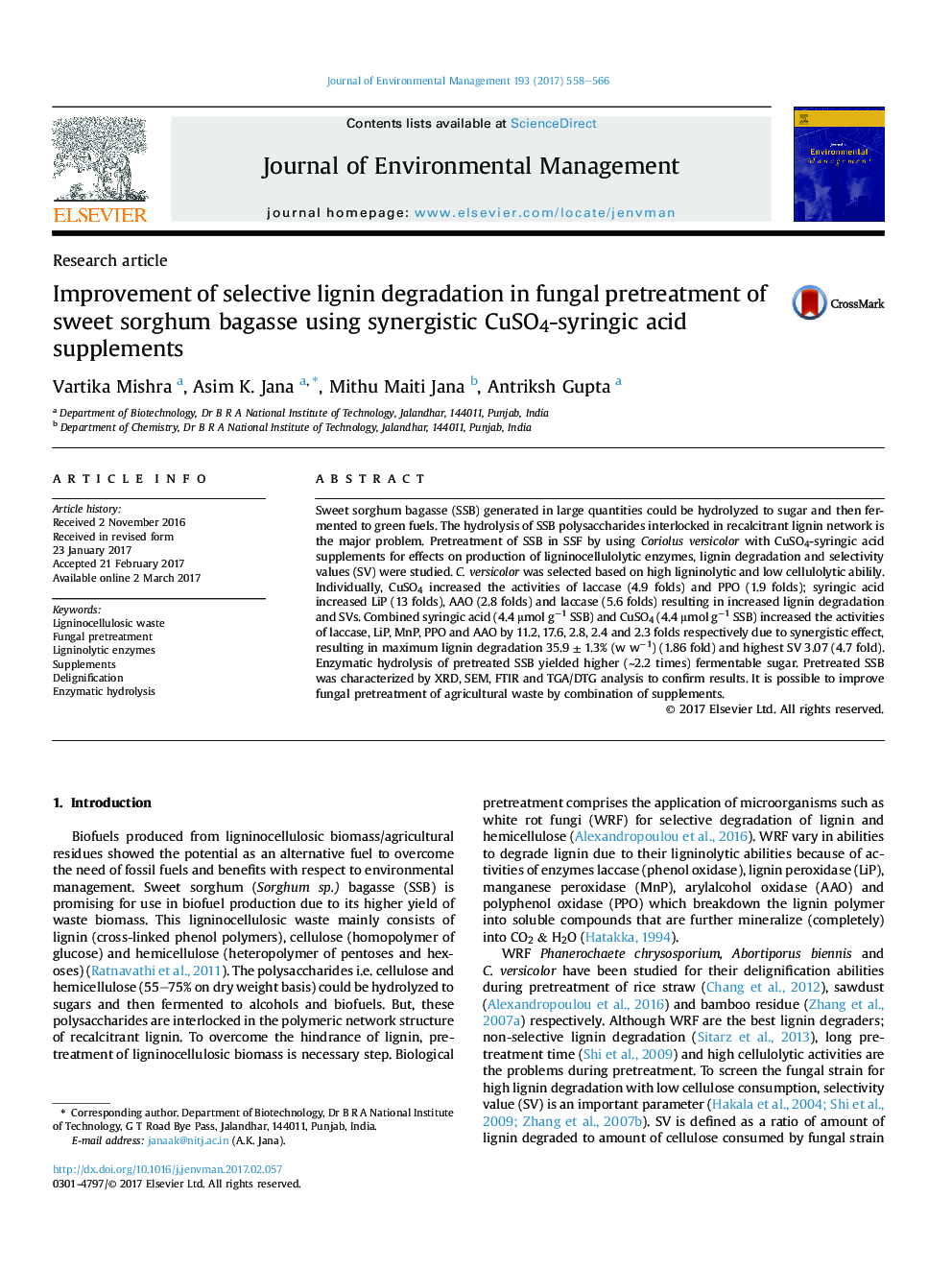| Article ID | Journal | Published Year | Pages | File Type |
|---|---|---|---|---|
| 5116859 | Journal of Environmental Management | 2017 | 9 Pages |
â¢Coriolus versicolor selected for pretreatment of sweet sorghum bagasse.â¢Pretreatment studied with combined CuSO4 and syringic acid supplements.â¢Lignolytic enzyme activities enhanced by synergistic interaction of supplements.â¢Higher lignin degradation (1.86 times) and selectivity value (4.7 times) achieved.â¢High fermentable sugar yield (â¼2.2 times) after enzymatic hydrolysis.
Sweet sorghum bagasse (SSB) generated in large quantities could be hydrolyzed to sugar and then fermented to green fuels. The hydrolysis of SSB polysaccharides interlocked in recalcitrant lignin network is the major problem. Pretreatment of SSB in SSF by using Coriolus versicolor with CuSO4-syringic acid supplements for effects on production of ligninocellulolytic enzymes, lignin degradation and selectivity values (SV) were studied. C. versicolor was selected based on high ligninolytic and low cellulolytic abilily. Individually, CuSO4 increased the activities of laccase (4.9 folds) and PPO (1.9 folds); syringic acid increased LiP (13 folds), AAO (2.8 folds) and laccase (5.6 folds) resulting in increased lignin degradation and SVs. Combined syringic acid (4.4 μmol gâ1 SSB) and CuSO4 (4.4 μmol gâ1 SSB) increased the activities of laccase, LiP, MnP, PPO and AAO by 11.2, 17.6, 2.8, 2.4 and 2.3 folds respectively due to synergistic effect, resulting in maximum lignin degradation 35.9 ± 1.3% (w wâ1) (1.86 fold) and highest SV 3.07 (4.7 fold). Enzymatic hydrolysis of pretreated SSB yielded higher (â¼2.2 times) fermentable sugar. Pretreated SSB was characterized by XRD, SEM, FTIR and TGA/DTG analysis to confirm results. It is possible to improve fungal pretreatment of agricultural waste by combination of supplements.
